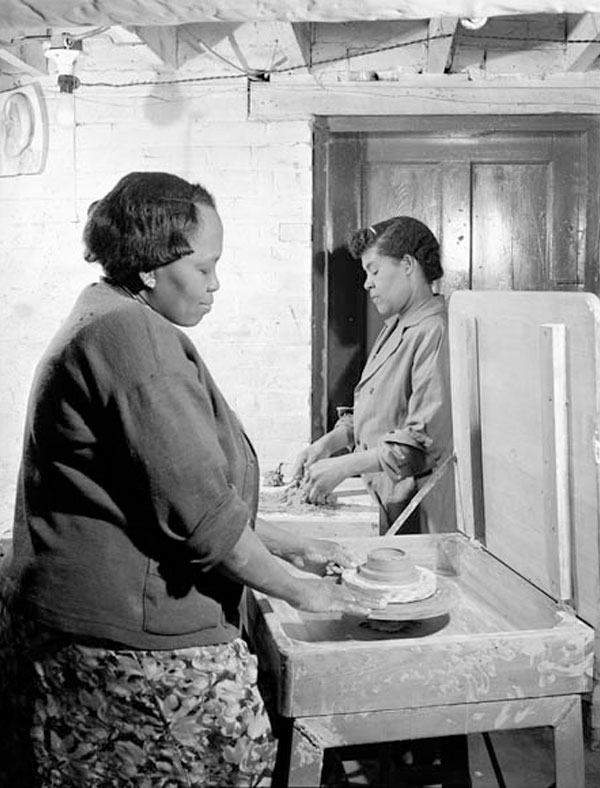The role of Black community organizations in shaping Black Canadian history
Home Service Association Nursery, 556 Bathurst Street, Toronto, Ontario, May 14, 1942
City of Toronto Archives / Fonds 1266, Item 79303
Photo: John Boyd, Jr.
The nuanced, complex story of Black populations in Canada is largely invisible. In recent years, Black History Month has helped highlight the lives of notable Black individuals. But Mélanie Knight, interim associate dean of Research and Graduate Studies, and advisor to the dean, Blackness and Black Diasporic Education, in the Faculty of Arts at Toronto Metropolitan University, says those narratives of singular individuals are missing the complexity of what it actually took to build thriving Black communities in Canada. Her work aims to fill in some of those details, including why communities mobilized, the kinds of groups and organizations they created, and the strategies they used to overcome various barriers—which still exist today.
Archival find—with missing pieces
Knight had been researching Black entrepreneurs and employment for a long time, but during a sabbatical, she had the opportunity to explore the archives of the Home Service Association (HSA). The HSA operated from 1921 to 1965 and provided a variety of services to Toronto’s Black community, including in-home supports, health services and recreational programming. Knight became fascinated by the stories the archival materials told through documents such as minutes of meetings, recordings with elders, event flyers, resource books, personal letters and photographs.
The Home Service Association operated between 1921 and 1965 and initially provided in-home supports for the Black community. It later expanded its services, becoming an independent community centre that provided counselling, health and legal support, and recreational programming, as well as a nursery, offering a welcome base for the Black community from the segregationist, neighbouring community centres.
“What surprised me at the onset was the way in which different organizations and groups collaborated and joined together to promote and support a cause,” she says. “A gathering could be held at the HSA and feature a writer from the US (Langston Hughes, for example), a singer from Nova Scotia and women domestic workers who did fundraising—all for one cause!”
Those archival materials made some of the barriers faced by Black communities more concrete, featuring letters explicitly denying Black individuals access to professions, schools, financing and even recreational spaces.
“We talk about anti-Black racism, but I think most people really don’t understand the immensity of the barriers our communities have had to navigate,” says Knight, noting that racism, segregation and the denial of civil rights applied to the immigration system, schooling, burial sites, recreational spaces and more. “When you read that a Black person was denied work in nearly any field other than as a train porter or a domestic worker, and then how this person found enough work—often in harsh conditions—to support their family and how they connected with community groups or organizations to fight against this discrimination that affected many, you can see the reach of power and oppression.”
The archives also showcased the work Black community organizations have done to overcome those barriers, including advocacy, collective action and forming their own institutions, such as credit unions. But, piecing together the full story is challenging due to missing records and a lack of specificity in records that do exist. On top of that, the dispersed nature of the record holdings meant that accessing all records on a particular topic involved visits to multiple archives.
It takes a community

Home Service Association, Toronto, Ontario
Photo: Library and Archives Canada / National Film Board of Canada / Fonds e000944806
Funded by a SSHRC Insight Grant, Knight’s work is looking into how and why some of these community organizations were formed, and the strategies they used to fulfil their mandates to support Black communities. For example, as Black individuals and business owners were often denied loans from mainstream banks, communities banded together to form their own credit unions. These groups have also created community libraries, organized Afrocentric summer camps, established citizens’ associations to support those formerly incarcerated, and more.
Knight found that, despite some advances, the archives reveal decades of work and mobilization on issues still facing Black communities today.
“All of it is focused in some way on education, which is a big one,” says Knight. “We still need educational reform, more visibility and more content about Black people and history. None of these issues are new.”
Knight was also interested in the transnational connections and perspectives in activist work, particularly the way Caribbean histories and experiences informed work in Black communities in Canada.
“All the major inroads we’ve made have come about because of collective action and community—building,” says Knight.
She cites the example of the Order of Sleeping Car Porters, the first Black labour union in North America, formed in 1917. Within two years of its formation, the union had negotiated two contracts that improved wages and job stability. This success proves the ability of Black communities to mobilize and organize nationally, even in the face of precarious employment and other barriers.
Giving voice to Black communities
Knight’s project will ultimately culminate in a book, as well as a series of six videos and learning guides focused on organizations that have so far been largely overlooked by most research, including the contributions of Black Francophone communities outside Quebec. These materials will be disseminated with the support of the Ontario Black History Society, to help share the stories of some of these organizations in classrooms and other settings.
“I want the narrative about Black people in Canada to come from the Black communities,” says knight.